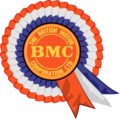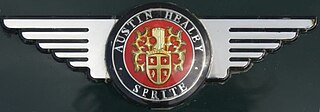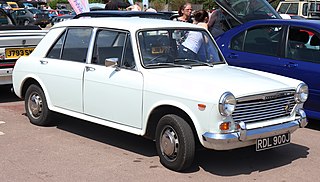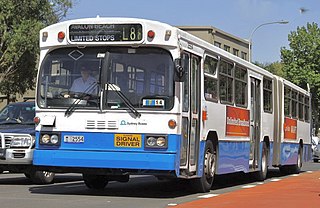
MG is a British automotive marque founded by Cecil Kimber in the 1920s, and M.G. Car Company Limited was the British sports car manufacturer that made the marque famous. Best known for its open two-seater sports cars, MG also produced saloons and coupés, with engines up to three litres in size. The marque is now owned by Chinese automotive SAIC Motor Corporation Limited.

The British Motor Corporation Limited (BMC) was a UK-based vehicle manufacturer, formed in early 1952 to give effect to an agreed merger of the Morris and Austin businesses.

The Austin Motor Company Limited was a British manufacturer of motor vehicles, founded in 1905 by Herbert Austin. In 1952 it was merged with Morris Motors Limited in the new holding company British Motor Corporation (BMC) Limited, keeping its separate identity. The marque Austin was used until 1987. The trademark is currently owned by the Chinese firm SAIC Motor, after being transferred from bankrupt subsidiary Nanjing Automotive which had acquired it with MG Rover Group in July 2005.

The Austin-Healey Sprite is a small open sports car which was produced in the United Kingdom from 1958 to 1971. The Sprite was announced to the press in Monte Carlo by the British Motor Corporation on 20 May 1958, two days after that year's Monaco Grand Prix. It was intended to be a low-cost model that "a chap could keep in his bike shed", yet be the successor to the sporting versions of the pre-war Austin Seven. The Sprite was designed by the Donald Healey Motor Company, with production being undertaken at the MG factory at Abingdon. It first went on sale at a price of £669, using a tuned version of the Austin A-Series engine and as many other components from existing cars as possible to keep costs down.
Donald Mitchell Healey CBE was a noted English car designer, rally driver and speed record holder.
Austin-Healey was a British sports car maker established in 1952 through a joint venture between the Austin division of the British Motor Corporation (BMC) and the Donald Healey Motor Company (Healey), a renowned automotive engineering and design firm. Leonard Lord represented BMC and Donald Healey his firm.

The Austin-Healey 3000 is a British sports car built from 1959 to 1967. It is the best known of the "big Healey" models. The car's bodywork was made by Jensen Motors and the vehicles were assembled at BMC's MG Works in Abingdon, alongside the corporation's MG models.

The Mini Moke is a small, front-wheel drive utility and recreational convertible, manufactured and marketed originally by British Motor Corporation (BMC), and subsequently marketed under the Austin, Morris and Leyland brands.

BMC ADO17 is the model code that was used by the British Motor Corporation (BMC) for a range of large family cars produced from September 1964 to 1975. The car was initially sold under the Austin marque as the Austin 1800, then by Morris as the Morris 1800, by Wolseley as the Wolseley 18/85, and later the Austin 2200, Morris 2200 and Wolseley Six. The 1800 was voted European Car of the Year for 1965.

The BMC ADO16 is a range of small family cars built by the British Motor Corporation (BMC) and, later, British Leyland. Launched in 1962, it was Britain's best-selling car from 1963 to 1966 and from 1968 to 1971. The ADO16 was marketed under various make and model names; however, the Austin 1100 and Morris 1100 were the most prolific of all the ADO16 variants.

Robert Paul Hawkins was an Australian motor racing driver. The son of a racing motorcyclist-turned-church minister, Hawkins was a capable single-seater driver but really made his mark as an outstanding sports car competitor driving Ford GT40s and Lola T70s. In 1969 Hawkins was included in the FIA list of graded drivers, an elite group of 27 drivers who by their achievements were rated the best in the world.

The MG Midget is a small two-seater sports car produced by MG from 1961 to 1979. It revived a name that had been used on earlier models such as the MG M-type, MG D-type, MG J-type and MG T-type.
The Austin Cambridge is a motor car range produced by the Austin Motor Company, in several generations, from September 1954 through to 1971 as cars and to 1973 as light commercials. It replaced the A40 Somerset and was entirely new, with modern unibody construction. The range had two basic body styles with the A40, A50, and early A55 using a traditional rounded shape and later A55 Mark IIs and A60s using Pininfarina styling.

The FMR Tg500 was a sports car built by Fahrzeug- und Maschinenbau GmbH, Regensburg (FMR) from 1958 to 1961. Based on the Messerschmitt Kabinenroller monocoque, which otherwise was a platform for three-wheelers, the Tg500 was a four-wheeled car with a two-stroke straight-two engine. FMR had taken over production of the KR200 from Messerschmitt in 1956. While the KR200 still used the Messerschmitt name and logo, the Tg500 was badged as an FMR.
Geoffrey Carroll Healey was a British automotive engineer.
Stuart Lane is a former Wales international rugby union player. In 1980 he toured South Africa with the British and Irish Lions and at the time played club rugby for Cardiff RFC.

The Austin-Healey Sebring Sprite is an automobile that was produced by the Donald Healey Motor Company at its Cape Works in Warwick, the Healey's Speed Equipment Division in Grosvenor Street, London and subsequently by John Sprinzel Ltd from their well-known premises in Lancaster Mews. A modified version of the production Austin-Healey Sprite, it was recognized by the governing body of motorsport, the Fédération Internationale de l'Automobile, as a separate model in its own right, featuring Girling disc brakes as well as specified engine and chassis improvements. After its homologation (motorsport) on 17 September 1960, FIA regulations permitted the use of 'special bodies' and a small number of Sebring Sprites were subsequently fitted with coupé bodywork in aluminium alloy and glassfibre, the most strikingly attractive examples being those devised by well-known race and rally driver John Sprinzel, who had won the 1959 RAC British Rally Championship. Sprinzel commissioned the coachbuilders Williams & Pritchard, renowned for their racing and prototype work, to produce the bodies. These are usually said to have numbered six, but eight are known to have been made. Further Sprites received similar alloy bodywork from Alec Goldie and Fred Faulkner of the firm Robert Peel Sheet Metal Works. The name 'Sebring Sprite' would become a generic term for any Sprite with disc brakes, and later for any Sprite with coupé or fastback bodywork.

Pressed Metal Corporation was an Australian automotive body building and assembly operation based in New South Wales.
The Amalgamated Drawing Office was the design and engineering department of the British Motor Corporation. From the early 1950s, the resulting projects of the office were known by the initials ADO. The numbers were assigned to vehicle and engineering projects, some resulting in production models. The ADO numbering system continued well beyond BMC's absorption into British Leyland, who continued to use the convention until the late 1970s.











